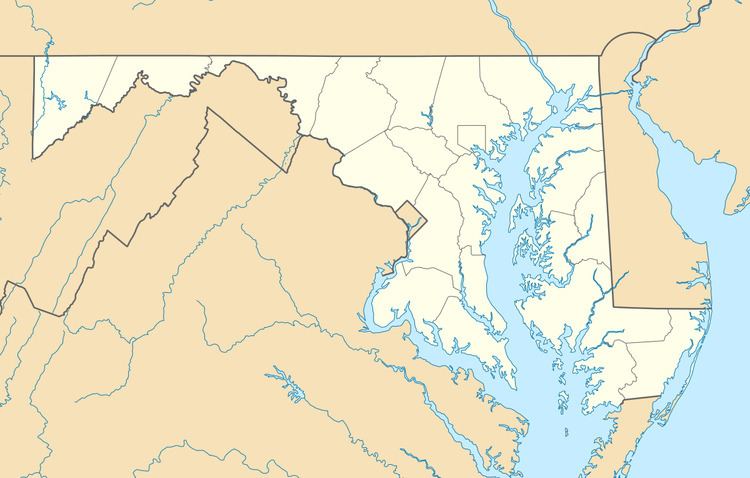Year built 1771 | Nearest city Jessup | |
 | ||
Spurrier's Tavern was a tavern and horse-changing depot which stood by the main road between Baltimore and Washington, D.C. (now U.S. Route 1) from 1771 to 1835 near what is now Jessup, Maryland.
Contents
1700s
The tavern was built on 190 acres of land patented by Thomas Spurrier as "Spurrier's Lot" which fronted the trail from Philadelphia to Georgetown. During the American Revolutionary War, Spurrier's tavern was significant as a supply and resting point for the Continental Army; George Washington was a frequent visitor. It became the central meeting place of the Elk Ridge Militia. In 1781 the depositions of the contested will of James MacGill of Athol were taken at the tavern. Thomas Twining, a British passenger on a stage coach trip from Baltimore to Georgetown in April 1796, described Spurrier's as a "solitary inn" at which they "found the usual substantial American breakfast".
1800s
John Spurrier's estate was sold in June 1811 to Rosalie Calvert. After 1812, the Inn was renamed Waterloo by an anti-Napoleon innkeeper; the tavern served stagecoaches bound for Washington, D.C., during the early 19th century. On December 7, 1812, the state authorized a company to run the Baltimore-Washington road in front of Spurrier's as a turnpike. John Pendleton Kennedy, a young militiaman during the War of 1812, wrote of his Fifth Regiment's stopping in 1814 "at Waterloo, then McCoy's Tavern" for dinner, ultimately on their way to Bladensburg. In 1815, brick stables were built following a hurricane. An 1827 lithograph by T.M. Baynes shows the inn as a tall two-story 3-bay wide structure with front porch, lantern, and sign servicing stagecoaches. The Inn had individual rooms and hot baths for travelers. Following nearly twenty years without a title, the property was recorded in 1832 to George Calvert of Anne Arundel County (Liber W.S.G 17 folio 193-195). At its peak before rail traffic in 1835, the Phoenix Stage serviced passengers between Baltimore and Washington with five-hour trips, with the tavern as midpoint. The tavern burned down on July 3, 1835, at a time when Irish and German B&O work teams were fighting and burning each other's camps nearby. The furniture was saved by stage passengers at the inn.
In 1836, George Calvert's estate was divided three ways, giving his daughter Caroline the 516-acre (209 ha) Spurrier property. Caroline's husband protested that the property was not equally valuable since the fire at the tavern. In 1841, as a supplement to the act that passed nearly thirty years prior, the State of Maryland recognized the Waterloo property along the Baltimore Washington Turnpike road as belonging to Caroline M[aria] Morris, for purposes of coordinating any route alterations. Morris owned what was then known as Waterloo farm; the prior act referred to the property as McCoy's Tavern. Morris (née Calvert, 1800–1842) had married Thomas Willing Morris (1792–1852) on June 19, 1823.
1900s
In 1917, the state of Maryland bought parts of two former farms adjoining the Baltimore and Washington boulevard at Waterloo, totaling 530 acres, for the use of the Maryland House of Correction. Referred to as Shamrock farm and Waterloo farm, both were described favorably by the Maryland State College of Agriculture (renamed a few years later as the University of Maryland). According to a 1980 inventory of the Maryland House of Correction by the Maryland Historical Trust, "farming was discontinued during the 1960s and lands were sold off to the Maryland State Police, the Patuxent Institution, the Correctional Institution for Women and the Correctional Camp Center, and the Maryland Wholesale Produce Market complex on the southeast corner of Route 1 and Route 175."
Present
The former location of Spurrier's Tavern is now the major intersection of U.S. 1 and Maryland Route 175 in Jessup, Maryland. A Holiday Inn now occupies the site, which bears Maryland historical markers. At least three such markers have been posted along these roads. The text of the markers has changed slightly over the years, adding some detail and removing notice of its being the place where George Washington's horse died. Washington mentioned Spurrier's several times in his diary entries.
